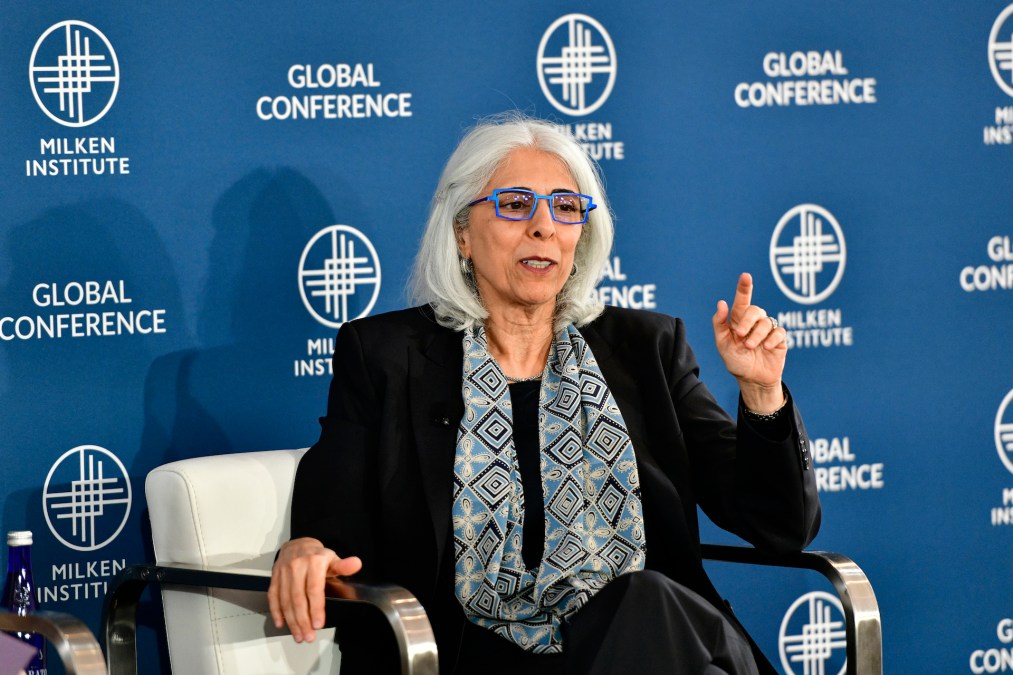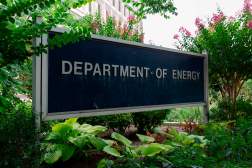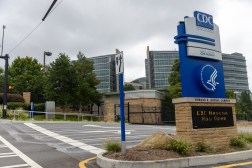Ex-OSTP director: Trump funding cuts are ‘assault’ on public research investment

A Biden-era director of the White House Office of Science and Technology Policy slammed the Trump administration’s cuts to research and development funding Wednesday, warning of adverse effects to areas such as artificial intelligence.
“Today what we are in the middle of is an assault on the public investment in research unlike anything we have seen in our country’s history,” Arati Prabhakar said during a panel held by Harvard’s Kennedy School.
Prabhakar specifically pointed to the Trump administration’s moves to withdraw support from certain projects, its removal of federal workers at research agencies, its attacks on universities, reversal of immigration policies that bring talent to the U.S., and the administration’s budget proposal that sought to cut federal R&D spending by roughly $44 billion.
“We’ve never seen anything like this, and it is extremely destructive to the science and technology enterprise today,” Prabhakar said, adding that “even more concerning to me is the damage it’s doing for Americans’ future because that public investment isn’t being made.”
For Prabhakar, R&D spending has been a frequent topic in public remarks. During her time leading OSTP, Prabhakar similarly spoke about how a lack of public research funding for AI stands in the way of the technology reaching its potential, and, before the end of the Biden administration, warned of potential R&D cuts under the then-incoming president. On Wednesday, she reiterated those positions, and indicated damage has already been done.
“Even if we magically reversed all the destruction today, we still are going to have many, many, many years of impact down the road,” Prabhakar said.
The White House didn’t immediately respond to a FedScoop request for comment.
While companies tend to invest R&D dollars in things that can be turned into products and drive profits, public investments are aimed at specific areas — like national security, health, energy, and the environment — that have public benefit, she said. Though those investments can also ultimately benefit the private sector as well.
“Implicit in the American funding of research and development is the understanding that in doing that work, we are also laying the basic research foundation on top of which our industries grow and thrive and sometimes are created,” Prabhakar said.
She added: “Any economist worth their salt will tell you that industry is known to underinvest in these areas because you can’t capture these returns from this early basic research.”
AI is one such area that needs public investment to achieve some of its most impactful innovations, per Prabhakar.
She said she’s excited by the possibilities of the growing technology to speed up the development of new drugs, close educational gaps, and improve weather forecasting amid climate change.
“These ideas can sound fantastical. The fact is: we’ve done bigger things than this,” Prabhakar said. “What is missing today is an active role for the public sector in achieving these bigger ambitions, because these are things that simply don’t just tumble out of companies that are working in the framework of the market.”
An example of that type of innovation is the use of AI tools that have been trained on biological data, she said. In 2024, the Nobel Prize for Chemistry was awarded to three scientists for breakthroughs in the understanding of proteins, including the development of an AI model that can predict protein structures.
Those advancements have fueled conversations about AI’s potential to speed up drug design, Prabhakar said. But the problem is that even if a bio design model came up with a molecule, it still needs to undergo Food and Drug Administration clinical trials, which can take a decade, and be approved as a drug.
“So the really interesting question is: What would it take for an AI model to be so good that the FDA could rely on it to improve and speed up clinical trial processes,” Prabhakar said.
She added: “That’s the Holy Grail I want to go after. That is an inherently public function.”
In order to do that, there needs to be industry and university capacity to develop those tools and do the work that eventually allows FDA to fully realize a faster approval process. “I’m dazzled by the possibilities and deeply concerned that we’re not doing the work that would really unlock them,” Prabhakar said.
Cutting functions at federal agencies also has an impact. AI weather forecasting, for example, can’t be achieved without data from sensors on ocean buoys, ships, satellites, and weather balloons across the globe that are operated by the National Oceanic and Atmospheric Administration, she said. But the agency faces the possibility of steep budget cuts.
“If you gut the other things across our research and development enterprise that you need to achieve these big possibilities, we’re not, we’re just not going to be on track to get there,” she said.






